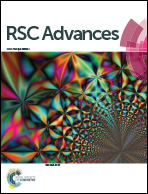Effects of preparation method on CeCu oxide catalyst performance
Abstract
CeCu-HT, CeCu-PC, and CeCu-CA composite oxide catalysts were synthesized using hard-template, coprecipitation, and complex methods, respectively, and characterized by XRD, TEM, BET, XPS, and H2-TPR. Catalytic properties were investigated through the catalytic combustion of phenyl volatile organic compounds in air. XRD results show that the prepared CeCu oxide catalysts all had CeCu oxide solid solution phases but distinct crystallinities and phase components. Low-angle XRD, TEM, and BET results demonstrate that CeCu-HT had a developed and ordered bicontinuous mesoporous structure, as well as a large specific surface area of 206 m2 g−1. CeCu-PC and CeCu-CA formed low-porosity, agglomerated structures with specific surface areas of 15 and 24 m2 g−1, respectively. XPS results confirm that the main chemical valance of the Ce and Cu species in the prepared CeCu catalysts is +4 and +2, respectively. And on combination with H2-TPR, CeCu-HT had more active oxygen species and higher reducibility compared with CeCu-PC and CeCu-CA. CeCu-HT had higher phenyl VOC catalytic combustion activity in air than CeCu-PC and CeCu-CA, and follows the following activity order: ethylbenzene > toluene > xylene > benzene. The prepared catalysts had low benzene catalytic combustion activities, with conversion below 70% in the studied temperature range. Lifetime test results show that the catalysts had high stabilities for ethylbenzene catalytic combustion because of their efficient activation of oxygen molecules from air to form active oxygen species at the corresponding temperature. The clear differences between the phenyl VOC catalytic combustion performances of the three CeCu oxide catalysts can be attributed to their distinct chemical components and structures, as well as to the physicochemical properties of phenyl VOC molecules.


 Please wait while we load your content...
Please wait while we load your content...